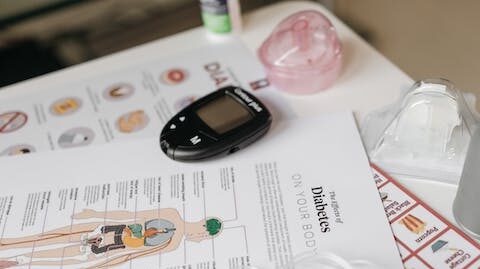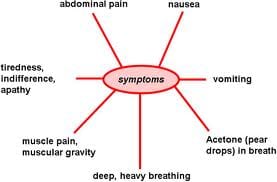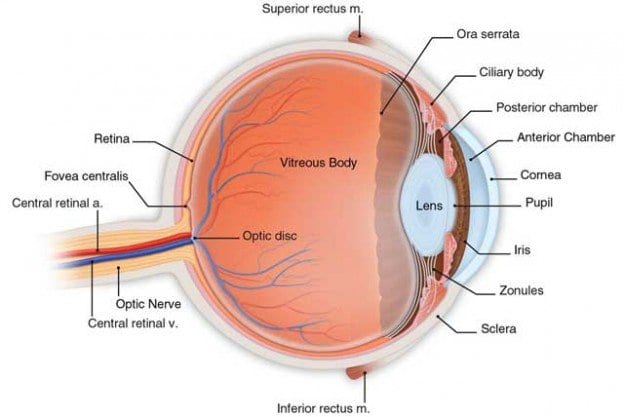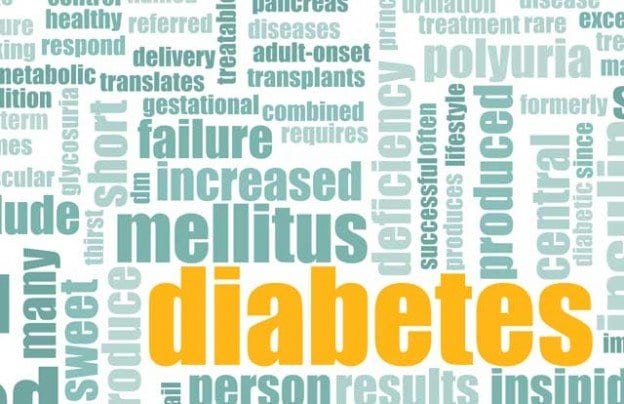What is Type 1 Diabetes
The pancreas just stops producing insulin so the patient has to take artificial insulin via injections. No pills will treat this condition. Mostly thought to be caused by an autoimmune attack on the pancreas that kills the insulin-producing cells. Not caused by obesity, diet or lack of exercise. Some patients are as young as one month old (infants) at time of diagnosis, but many diagnoses come frequently during the teen years. No cure. One day, pancreas transplants might be perfected. Very, very, very difficult to control — a daily balancing act of preventing blood sugar highs and lows, a battle that goes on for a lifetime. Short-term side effects can be deadly, and long-term side effects are deadly. (Read below for more information.)
What is Type 2 Diabetes
The pancreas still produces insulin, but the body does not process that insulin correctly. Pills can be used to treat type 2 diabetes, along with diet adjustments and exercise. There is no cure, but a patient can control their type 2 diabetes so well that it seems to disappear, but it hasn’t disappeared. The patient needs to stay vigilant in taking care of their condition. In years past, this was mostly diagnosed in older adults. Younger and younger patients are being diagnosed in recent years. (Read below for more information.)
What is Insulin Resistance (or pre-diabetic condition)
The pancreas makes extra insulin to take care of the higher than normal blood sugar levels a patient is dealing with. As time passes, the pancreas stops making this extra insulin and the condition leads to a diagnosis of type 2 diabetes. Currently being diagnosed in patients who are younger and younger, usually the teen years, because of poor diet and lack of exercise. (Read below for more information.)
Why is it called Type 1 Diabetes
Your pancreas is kaput when it comes to making insulin. It quits doing its job. It just doesn’t do it anymore. The only way you can continuing living is to put artificial insulin into your body either through a daily shot (most likely, multiple shots) or an insulin pump. There is no “pill” treatment for type 1 diabetes, insulin injections only. Presently, there is no cure for type 1 diabetes. Type 1 diabetes is not caused from being overweight or obese. There is absolutely nothing you can do to prevent a diagnosis of type 1 diabetes. You did nothing that caused this to happen. It is not your fault. It is just a case of “bad medical health luck.” A person is stuck with this condition for the rest of their lives. It never goes away, and it always requires diligent treatment and oversight. Take five minutes to feel sorry for yourself after the initial diagnosis of yourself or of your child and then shut the door on that. Dedicate your life to doing the best you can. That’s all you can do – your very best. There are diagnoses out there much worse than type 1 diabetes, conditions that can take you or your child in a matter of days, weeks, or months. Type 1 diabetes is nothing to celebrate, don’t get me wrong, and it’s a tricky situation, a very difficult job to manage it, but you never give up. Those with long-term type 1 diabetes almost always suffer from some type of complications from the disease, even though they work constantly to keep their blood sugar levels as regulated as possible. (Complications: Insulin reaction, meaning the blood sugar level has dropped too low. In other words, too much insulin in the body. Which means, a person can go into what is frequently referred to as a “diabetic coma.” If left untreated, a person can die from a diabetic coma. They immediately need that blood sugar to be raised. Long-range side effects include (but are not limited to) blindness, limb amputation, kidney dialysis because of kidney failure, and heart attacks at an early age because of the damage done to the body. (Research is currently underway for the hope of more success in a pancreas transplant, the one-day, ultimate treatment for type 1 diabetes.)
Why is it called Type 2 Diabetes
Changes within your body cause the blood sugar levels to rise higher than they should. Your pancreas still produces insulin, but your body does not process that insulin correctly. Currently, treatment for type 2 diabetes is oral medication. Insulin shots are not used in type 2 diabetes unless the patient cannot control their blood sugar levels with diet, oral medication and exercise. Most times, type 2 diabetes is attributed to being overweight, even obese, lack of exercise, and having a poor diet, but genetics and environment are also thought to have a role. (Varying theories abound about this.) You can control this condition without going into injections, but you have to take care of yourself so you don’t get to the point where you need injections. If you’re overweight, lose the weight. If exercise to you is walking to the fridge, get outside and walk, walk, walk. Do everything you can to prevent your condition from worsening. You’re in charge of it, it’s not in charge of you.
Why is it called Insulin Resistant
Insulin resistant is a condition in which your pancreas makes extra insulin to make up for the higher than normal blood sugar levels that you are running. A lot of times, this is referred to as “pre-diabetic” condition. Eventually, the pancreas stops making that extra insulin and your pancreas just can’t make enough insulin to keep your blood sugar levels where they should be. When this happens, you’ve graduated to a diagnosis of type 2 diabetes, and all that that encompasses. Before that graduation to the next level, this is a very important time for you to take charge of your health. The longer you can delay the diagnosis of type 2 diabetes, the better health you will have in the future. Insulin resistance can be attributed to being overweight or obese, poor diet and lack of exercise. Insulin resistance does not have to lead to a diagnosis of type 2 diabetes. You can nip it in the bud and add years to your life by making adjustments now. Get up out of that chair, get off that sofa and move, and don’t buy candy bars and sugary drinks and stay away from any desserts. Learn about carbs. This is your life and you can change it right now.
Theories on the Cause of Type 1 Diabetes
Type 1 diabetes usually strikes those under 25 years of age. Over the years, many theories have been tossed out about the cause of type 1 diabetes. One of the most current theories and the most accepted in the health field is that a virus attacks the body and a person’s immune system kicks in and on an errant mission known only to itself attacks the insulin-producing cells in the Islet of Langerhans (the cells within the pancreas that produce insulin), with this person usually having a predisposition (family history—possibly going back generations) to some form of diabetes. But, a predisposition is not always there. Some families have no history of any form of diabetes at all and then their three-month old grandchild is diagnosed with type 1 diabetes. Then again, you can have five siblings in the same family who are diagnosed with type 1 diabetes, and it’s often said in that family that, Grandma Yumkins had “sugar,” or Cousin Plumcakes had the “diabetus.” No two cases are ever the same, no two histories are ever the same, no two outcomes are ever the same.
Theories on the Cause of Type 2 Diabetes
The exact cause is not known (perhaps genetics or environmental issues come into play), but being overweight and inactive are almost always contributing factors.
Symptoms of Type 1 Diabetes
It is important to know the symptoms of type 1 diabetes because if the patient is especially young (meaning from day of birth to their teens), they can slip into ketoacidosis. Ketoacidosis is when the blood sugar level is so high that the body eventually shuts down. A kaput pancreas equals no insulin in the body; no insulin in the body means a buildup of glucose in the bloodstream and organs, which can lead to death. As soon as symptoms are detected in yourself or your child, get to the doctor. If symptoms are severe, go to the emergency room. A simple blood test can detect type 1 diabetes. (A young child might not be able to verbalize the symptoms listed below, so it’s a good list for any parent to be familiar with so they can see that something is wrong and do something about it as soon as possible. Symptoms can become very evident in a matter of days.)
- Extreme thirst
- Excessive urination
- Extreme fatigue
- Deep breaths
- Dry mouth and skin
- Fruity breath smell
- Stomach pain
- Extreme hunger
- Unexplained weight loss
- Blurred vision
- Vomiting
- Nausea
Symptoms of type 2 Diabetes
Type 2 diabetes symptoms usually come on gradually, and they include all the symptoms listed above for type 1 diabetes.
Symptoms of Insulin Resistant (or Pre-diabetic Condition)
Insulin resistant symptoms are the same as listed for type 1 and type 2 diabetes. Like type 2 diabetes, the symptoms usually come on gradually. With insulin resistance, there can also be a darkening of the skin in the folds and creases of the body (armpits and around neck). This is called acanthosis nigricans. Acanthosis nigricans can also be present in the diagnosis of type 2 diabetes.
Medications for Type 1 Diabetes
Injectable insulin is the only treatment for type 1 diabetes. There is rapid-acting insulin, short-acting insulin, intermediate-acting insulin, 20-24 hour insulins, 24-hour insulins, and then pre-mixed insulins. You and your doctor will decide which is best for you. You might opt for a little bottle of insulin that you push a needle into and pull back on the syringe to take the insulin out of the bottle, or you might opt for the more convenient insulin pens. With an insulin pen, a cartridge of the insulin you use is in this “pen.” Just pop the pen against your skin, and the insulin is injected into you. These pens save time in administering, but for the person squeamish of needles, it goes a long way in making the process of taking the insulin a lot easier. You will need to test your blood sugar level often by pricking your finger, putting a little blood on a test strip and inserting it into your glucose meter. The results of that number in the meter helps tell a patient how much and what kind of insulin to use. A list of some of the injectable insulins are as follows:
Managing type 1 diabetes is costly. The range in price for insulin varies. If you’re going with the pre-mixed, the cost is much higher. With the Affordable Health Care Act (Obamacare) in place, eventually, insurance companies will not be allowed to deny you coverage for a pre-existing condition, or a costly health condition, and the medical insurance will make your supplies more affordable.
Medications for Treatment of Type 2 Diabetes
Some oral medications commonly used in the treatment of type 2 diabetes are:
Insulin injections are used with type 2 diabetes in extreme cases only when the patient does not control their condition through diet and exercise.
Insulin Resistant Medications
Typically, there are no medications at this stage, but the patient is taught about nutrition and the importance of exercise to prevent their condition from worsening.
Management Tools for any Type Diabetes
Yes, regardless of the type diabetes you have, you are going to have to manage your condition. You will need to know your blood sugar levels in order to decide what type insulin to use if you have type 1 diabetes. If you have type 2 diabetes, you need to know your blood sugar levels to see how well you are managing with your diet, exercise and food intake. If you are insulin resistant, you want to keep an eye on your progress. You will need:
If you have gone the route of using a pump, you will need additional supplies which your doctor will help you with. And the pump people out there – we heard an interesting comment from a contestant on American Idol. He stated that he had a “robotic pancreas” on his guitar strap. He was proud of it, and we’re proud of him for stating that for all the people to hear. Kudos to him!!! Eternal appreciation to him for acknowledging what was on his guitar strap. Some people have had great success with their insulin pumps; some veer away from the insulin pumps. It’s what is right for you and what works for you. Again, everybody is different.
Frequently Asked Questions Related to Diabetes
What is a diabetic coma?
There are two reasons for a diabetic coma, but both reasons lead to unconsciousness and both conditions require immediate medical help or the patient could die.
Hypoglycemia
Low blood sugar levels. Usually comes on very suddenly and can be deadly. Call 911 immediately. Blood sugar levels drop so low that the body shuts down. If not treated, the patient is very likely to die. Hypoglycemia usually occurs in patients who have type 1 diabetes and are taking artificial insulin. The patient runs a little too far and burns a few too many calories, or they skip that important snack. Again, this is part of the juggling act of controlling the highs and lows of blood sugar levels in persons with type 1 diabetes.
(In the past, oral medications for type 2 diabetes did not cause extreme low blood sugar levels so there was no concern about hypoglycemia. With the advent of some of the newer oral medications, some people do experience some slight low blood sugar levels, especially when they are first started on these newer medications but rarely do patients with type 2 diabetes suffer from extreme hypoglycemia.)
Hypoglycemia is a very, very dangerous condition. Call 911 immediately if a person with type 1 diabetes becomes unconscious, acts disoriented, or becomes delirious.
Hyperglycemia
High blood sugar levels. Usually comes on slowly, but needs immediate medical attention. Call 911. The blood sugar levels are extremely high. A child puts his head down on the desk, falls to sleep (or everyone around him thinks) and then the teacher can’t rouse him. This, typically, is an example of a child who has undiagnosed type 1 diabetes so the blood sugar levels have risen and risen and risen. Many instances of type 1 diagnoses have come about by the child being found unconscious either at home or at school. In most cases, these children are taken to the ER, given treatment and the blood sugar level is brought back under control; thereafter, the child will be taught about their type 1 diabetes diagnosis and treatment options.
What is an Insulin Reaction?
Low blood sugar levels to the point that intervention is needed immediately. The hands start shaking, the body seems to tremble, and the brain begins to get confused. If not treated right away, unconsciousness will occur. You can treat with sugar, candy, sugared drinks, honey – anything that is concentrated sugar that will raise the blood sugar level right away. A piece of bread will take too long to treat the condition. If the patient doesn’t respond, call 911.
What is Ketoacidosis?
In reference to diabetes, the body has a lack of insulin and then produces ketones in the blood. This condition is usually found when the blood sugar levels are extremely high and is usually found in a patient who is newly diagnosed, or anyone with extremely high blood sugar levels. This is what causes the fruity smell that can at times be detected in a person with undiagnosed type 1 diabetes.
This is a plainly written information paper on the difference between type 1 and type 2 diabetes. Always consult with your doctor about any questions you have regarding your diabetes. The Juvenile Diabetes Research Foundation (JDRF) and the American Diabetes Association (ADA) will always answers any questions you may have and help you in any way that they can. Never hesitate to call them.









